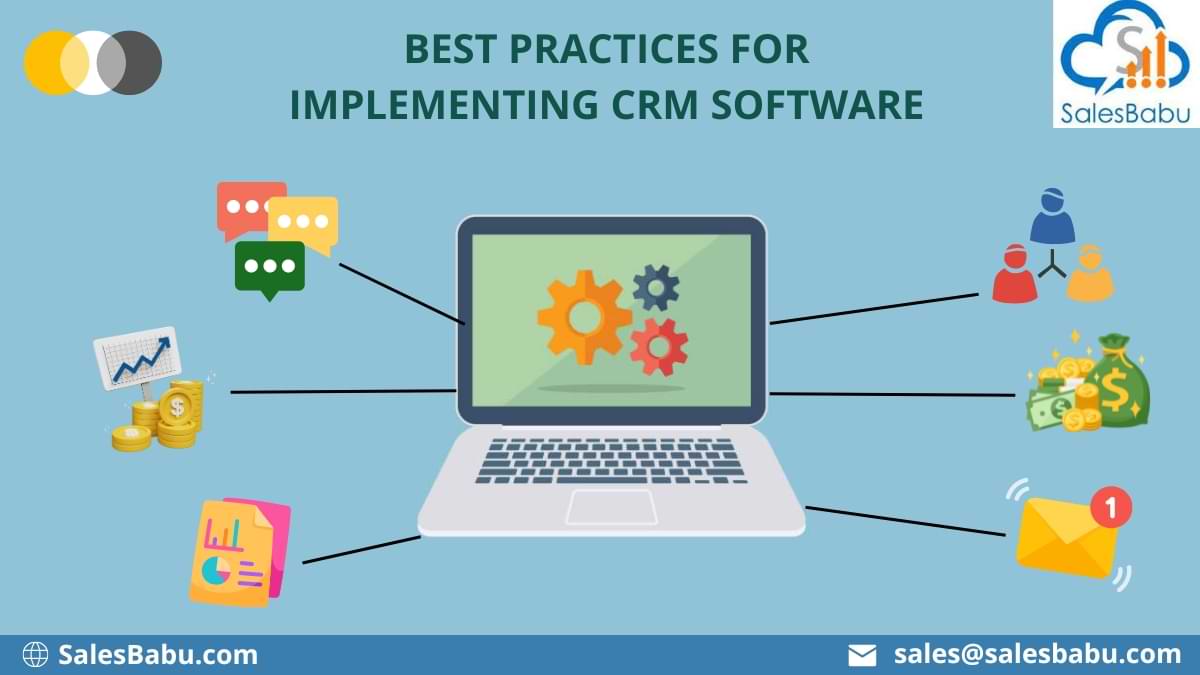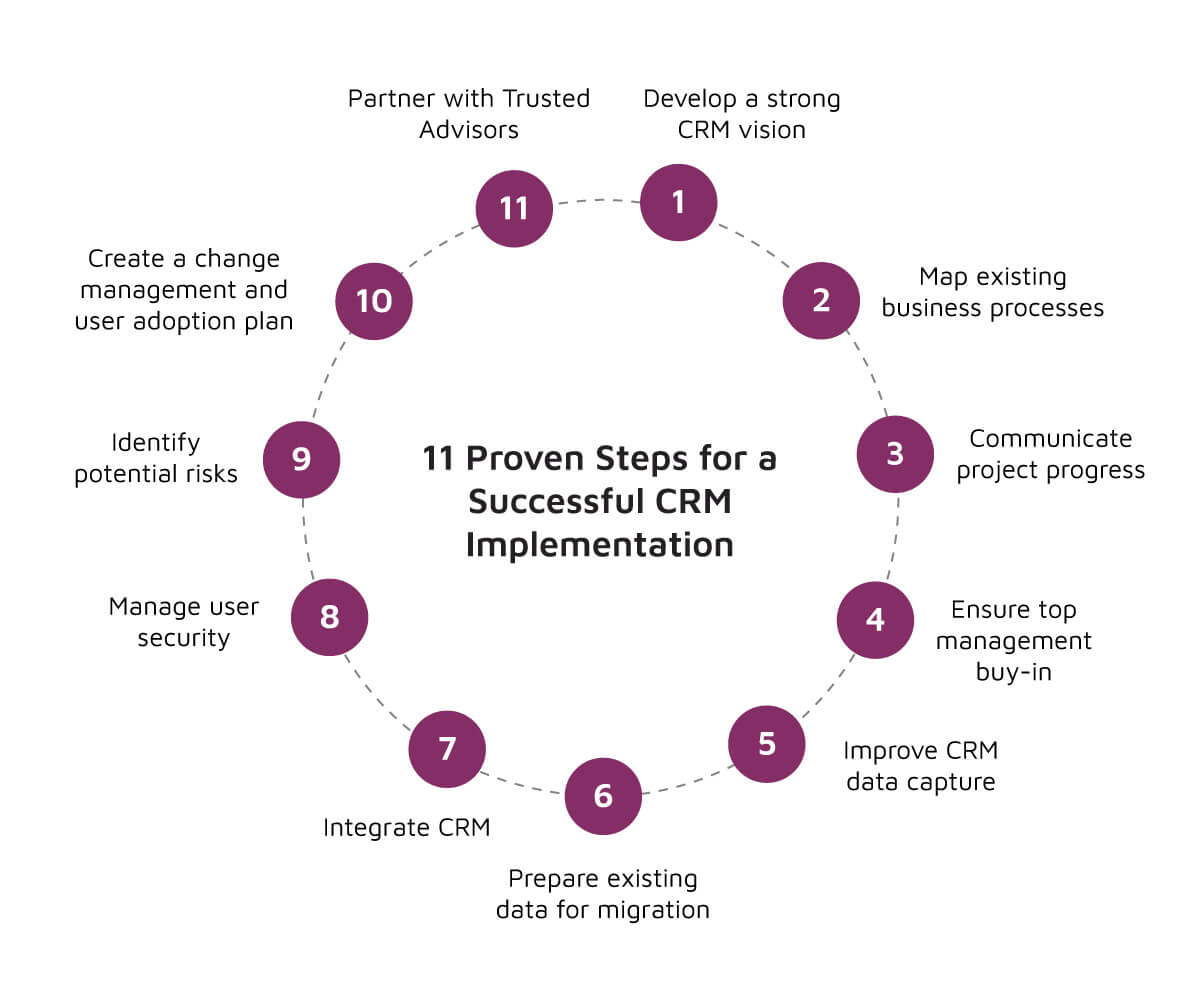In today’s fast-paced business world, Customer Relationship Management (CRM) systems have become an essential tool for companies to manage their interactions with customers, streamline sales and marketing processes, and gain a competitive edge. However, implementing a CRM system can be a daunting task, and if not done correctly, it can lead to wasted resources, decreased productivity, and a negative impact on customer relationships. In this article, we will discuss the best practices for CRM implementation to help you get the most out of your investment.

1. Define Your CRM Goals and Objectives
Before implementing a CRM system, it’s essential to define your goals and objectives. What do you want to achieve with your CRM system? Is it to increase sales, improve customer satisfaction, or enhance customer retention? Identifying your goals and objectives will help you choose the right CRM system and ensure that it aligns with your business strategy.
2. Choose the Right CRM System
With so many CRM systems available in the market, choosing the right one can be overwhelming. Consider the following factors when selecting a CRM system:
- Scalability: Choose a CRM system that can grow with your business.
- Customization: Select a CRM system that can be customized to meet your specific business needs.
- Integration: Ensure that the CRM system integrates with your existing systems, such as marketing automation and customer service software.
- User interface: Choose a CRM system with an intuitive user interface to ensure user adoption.
- Cost: Consider the total cost of ownership, including implementation, training, and ongoing support.
3. Develop a CRM Implementation Strategy
Developing a CRM implementation strategy is crucial to ensure a smooth and successful implementation. Consider the following steps:
- Conduct a needs assessment: Identify the business processes that will be impacted by the CRM system.
- Define user roles and responsibilities: Identify the users who will be using the CRM system and define their roles and responsibilities.
- Develop a training plan: Develop a training plan to ensure that users are equipped to use the CRM system effectively.
- Establish a data migration plan: Develop a plan to migrate existing customer data into the new CRM system.
4. Ensure Data Quality and Integrity
Data quality and integrity are essential for a successful CRM implementation. Consider the following best practices:
- Data cleansing: Cleanse existing customer data to ensure accuracy and consistency.
- Data standardization: Standardize data formats to ensure consistency across the organization.
- Data validation: Validate data to ensure that it meets the required standards.
5. Provide Ongoing Training and Support
Providing ongoing training and support is essential to ensure that users are equipped to use the CRM system effectively. Consider the following best practices:
- Develop a training program: Develop a training program that includes classroom training, online training, and on-the-job training.
- Provide ongoing support: Provide ongoing support to users, including technical support, user guides, and FAQs.
- Monitor user adoption: Monitor user adoption to identify areas where additional training or support may be required.
6. Continuously Monitor and Evaluate the CRM System
Continuously monitoring and evaluating the CRM system is essential to ensure that it is meeting its intended goals and objectives. Consider the following best practices:
- Establish key performance indicators (KPIs): Establish KPIs to measure the performance of the CRM system.
- Monitor user adoption: Monitor user adoption to identify areas where additional training or support may be required.
- Conduct regular reviews: Conduct regular reviews to assess the effectiveness of the CRM system and identify areas for improvement.
FAQs
- What is the average cost of a CRM system?
The average cost of a CRM system varies depending on the size of the organization, the number of users, and the features required. However, the average cost of a CRM system can range from $50 to $500 per user per month. - How long does it take to implement a CRM system?
The time it takes to implement a CRM system varies depending on the complexity of the implementation, the size of the organization, and the number of users. However, a typical CRM implementation can take anywhere from 3 to 12 months. - What are the benefits of a cloud-based CRM system?
The benefits of a cloud-based CRM system include reduced upfront costs, increased scalability, and improved mobility. Cloud-based CRM systems also provide automatic software updates, ensuring that the system is always up-to-date and secure. - How do I ensure user adoption of the CRM system?
To ensure user adoption of the CRM system, provide ongoing training and support, communicate the benefits of the CRM system, and recognize and reward users who effectively use the system. - What are the common pitfalls of CRM implementation?
The common pitfalls of CRM implementation include poor data quality, inadequate training, and lack of user adoption. Other pitfalls include insufficient resources, inadequate customization, and lack of ongoing support.
Conclusion
Implementing a CRM system can be a complex and challenging task, but with the right approach, it can also be a highly rewarding one. By following the best practices outlined in this article, you can ensure a successful CRM implementation that meets your business goals and objectives. Remember to define your CRM goals and objectives, choose the right CRM system, develop a CRM implementation strategy, ensure data quality and integrity, provide ongoing training and support, and continuously monitor and evaluate the CRM system. With the right approach, you can unlock the full potential of your CRM system and achieve significant benefits, including improved customer satisfaction, increased sales, and enhanced customer loyalty.
Closure
Thus, we hope this article has provided valuable insights into Best Practices for CRM Implementation. We hope you find this article informative and beneficial. See you in our next article!


